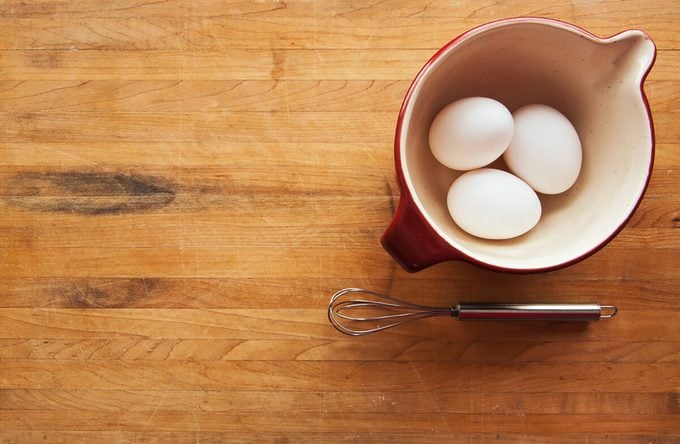5 Things You Need to Know Before Buying a Butcher Block Countertop
Updated: Aug. 14, 2018
Butcher block countertops are beautiful and work well with any decor, but there are a few tips you need to know before committing to this trend.

If you’re someone who loves to spend time in the kitchen and enjoys their fair share of design shows, you’ve undoubtedly encountered the latest kitchen trend: butcher block countertops. These surfaces are not only incredibly stylish, they’re functional as well (they’re giant cutting boards, after all!).
But there are a few things to know before you invest in replacing your countertop or just upgrading your kitchen island. We’ve got the scoop on what you need to consider before taking the plunge.
1. You’ll have to take care of them
While pretty, butcher block countertops require much more maintenance than their marble or stone counterparts. You’ll have to treat the surface with mineral oil to protect the natural wood and use sandpaper to sand down and fill in any nicks or scratches that have occurred. On average, this kind of re-treating must be done once a year, but it also depends on how you use the countertop. The positive is that, if maintained properly, these countertops can last a very long time.
2. They warm up your kitchen
Natural wood adds a rustic feel to any space and can help make your kitchen feel more cozy and comfortable. And if you are more into the modern look, incorporating butcher block can add an unexpected contrast that is very on-trend. It’s a piece of decor that is very much of-the-moment but also beautiful and tasteful.
3. There are different styles
The two primary choices you have when purchasing butcher block countertops are end grain or edge grain. While end grain (where the ends of the wood fibers are exposed) is more expensive, it lasts longer and generally wears better. Edge grain (named because the surface of the counter is the side edges of the wood) shows marks more easily.
You can also choose your type of wood, including oak, birch, maple and more. Some woods, like oak, have a larger grain, but are also hard and durable. Birch has a more subtle grain but is a bit softer.
4. You can skip the cutting board
If you want to, that is. (Continuing to use a cutting board, though, will make your counters last longer.) Because wood is porous, butcher block countertops can hold onto a lot more germs than other surfaces—though countertops are always dirtier than we’d like to admit. To combat dirt, grime and germs, make sure you clean the counter after every use with mild soap and water or vinegar (psst…vinegar’s our secret cleaning weapon).
5. Be careful with water and heat
Putting butcher block countertops near the sink or your stove can be very risky if you’re not careful. When it comes to water, the wood absorbs liquid very quickly, which can lead to mold. Plus, if you spill something like coffee or tomato sauce, there’s a high chance of staining because of the countertop’s porous nature. And when it comes to the stove or other hot pots and pans, heat can not only burn the wood, it can cause cracks or bubbles in the counter’s surface. Though you may consider wood very durable (and it can be), it’s best to be extra cautious and treat it like any other sensitive countertop surface, like marble or even granite.
If the thought of covering all of your counter space with butcher block is overwhelming (and a little intimidating), fear not: You can always opt to resurface a smaller section of your kitchen (like your island) or just buy a beautiful butcher block cutting board. Whatever you choose (even if choosing just means pinning a few ideas to your Pinterest board), you’re sure to enjoy the beauty of a fresh butcher block finish.




















